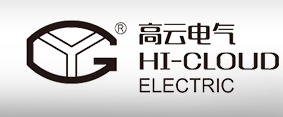1. Function of filter
The function of the filter is to allow a part of the frequency signal to pass smoothly, while the other part of the frequency signal is greatly suppressed, which is essentially a frequency selection circuit. In the filter, the frequency range that the signal can pass through is called passband or passband; conversely, the frequency range that the signal is greatly attenuated or completely suppressed is called stopband; the dividing frequency between passband and stopband is called cut-off frequency; the voltage gain of ideal filter in passband is constant, and the voltage gain in stopband is zero; the actual filter between passband and stopband is called stopband There is a certain frequency range of transition band.
2. Filter classification
(1) According to the processed signal, it can be divided into analog filter and digital filter.
(2) According to the frequency band of the signal, it can be divided into four types: low pass, high pass, band pass and band stop filter.
Low pass filter: it allows the low frequency or DC component in the signal to pass through, and suppresses the high frequency component or interference and noise.
High pass filter: it allows the high frequency component in the signal to pass through, and suppresses the low frequency or DC component.
Band pass filter: it allows signals of a certain frequency band to pass through, and suppresses signals, interference and noise below or above the frequency band.
Band stop filter: it suppresses signals in a certain frequency band and allows signals outside the frequency band to pass.
(3) According to the components used, it can be divided into passive and active filter.
Passive filter: a filter composed of only passive components (l.c.r). It is composed of the principle that the reactance of capacitance and inductance components changes with the frequency. The advantages of this kind of filter are: the circuit is relatively simple, does not need DC power supply, and has high reliability; the disadvantages are: the signal in the passband has energy loss, the load effect is relatively obvious, and it is easy to cause electromagnetic induction when using inductive elements. When the inductance L is large, the volume and weight of the filter are relatively large, which is not applicable in the low-frequency domain.
Active filter: it is composed of passive components (generally R and C) and active components (such as integrated operational amplifier). The advantages of this kind of filter are: the signal in the passband not only has no energy loss, but also can be amplified, the load effect is not obvious, the mutual influence is very small when the multistage is connected, it is easy to form a high-order filter by using the simple method of cascading, and the filter is small in volume, light in weight, and does not need magnetic shielding (because no inductive element is used); the disadvantages are: the passband range is subject to active The bandwidth limitation of devices (such as integrated operational amplifiers) requires DC power supply, so its reliability is not as high as that of passive filters. It is not suitable for high voltage, high frequency and high power applications.
3. Main parameters of filter
(1) Pass band gain A0: voltage amplification factor in the filter pass band.
(2) Characteristic angular frequency and characteristic frequency FN: it is only related to the parameters of resistance and capacitance elements used for filtering. Generally, for band-pass (band stop) filters, it is called the central angular frequency or central frequency f0 of the band-pass (band stop) filter, which is the frequency of the maximum (minimum) point of voltage gain in the pass band (stop band).
(3) Cut off angular frequency and cut-off frequency f0: it is the corresponding angular frequency when the voltage gain drops to (i.e.). It must be noted that not necessarily equal to. There are two types of band-pass and band stop filters, and.
(4) Passband (stopband) width BW: it is the difference between two bandpass (stopband) filters, that is.
(5) Equivalent quality factor Q: for low-pass and high-pass filters, when Q value is equal to the ratio of mode to pass band gain of filter circuit voltage gain, that is, for band-pass (band stop) filters, Q value is equal to the ratio of center angle frequency to pass band (stop band) width BW, that is.
4. Order of APF
The highest "power" of "s" in the denominator of transfer function of active power filter is called "order" of filter. The higher the order is, the steeper the transition band of the filter's amplitude frequency characteristic is, and the closer it is to the ideal characteristic. In general, the transition band of the first-order filter attenuates at the rate of 20dB per decade of frequency multiplication; the second-order filter attenuates at the rate of 40dB per decade of frequency multiplication. The high-order filter can be composed of low-order filters in series.
5. Dual relationship between low pass and high pass filters
(1) Dual relation of amplitude frequency characteristics
When the pass-band gain A0, cut-off frequency or F0 of low-pass filter and high-pass filter are equal respectively, the amplitude frequency characteristic curve of them is symmetrical with respect to the vertical line f = F0.
(2) Dual relation of transfer function
If the s in the transfer function of the low-pass filter is replaced by 1 / s, it will become the transfer function of the corresponding high pass filter
(3) Dual relation in circuit structure
The low-pass filter is transformed into the corresponding high pass filter by changing the filtering capacitance C into the resistance R and the filtering resistance R into the capacitance C.
Influence of filter on voltage waveform of PWM Variable frequency motor terminal
With the application of microelectronics technology and modern control theory in AC variable frequency speed regulation system, the performance of frequency converter (or inverter) has been improved by leaps and bounds, and it is more and more widely used in many fields of industrial production and daily work. However, the pulse voltage with steep rising or falling edge output by the frequency converter produces over-voltage on the motor terminal and winding, which causes the premature damage of the motor winding insulation. The test results show that the very high voltage rise rate (DV / DT) produces extremely uneven voltage distribution on the motor winding, and with the increase of the cable (wire) length between the frequency converter and the motor, the over-voltage of high frequency oscillation is generated on the motor terminal, when the cable length exceeds a certain critical value



 Manager Zhou
Manager Zhou  0086-574-87834881
0086-574-87834881  www.gaoyun.com/en
www.gaoyun.com/en  518 Yindong South Road, Binhai Industrial Park, Zhanqi Town, Yinzhou District, Ningbo
518 Yindong South Road, Binhai Industrial Park, Zhanqi Town, Yinzhou District, Ningbo